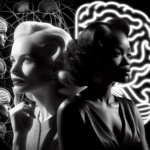Walking the Tightrope: The Balancing Act of Law Enforcement
As a seasoned crime investigator, I’ve often tread through the labyrinth of violence, betrayal, and deceit. Crime, as an entity, carries a cloak of shadows; enshrouded in complex layers that hide the truth. We, law enforcement officers, delve into this intimidating abyss, armed with determination and a pursuit for justice. Our journey prowls through the palpable fear, resentment, and reluctant admittance in the eyes of a suspect, the broken trust etched on a victim’s tear-streaked face, and the hard-hitting legalities in the courtrooms.
From the gritty streets to the opulent high tower offices, crime knows neither boundaries nor social status. It is our duty to seek the truth, a mission that often leads us into dangerous territories.
The Intricate Web: Criminal Profiling’s Role
One might believe that deciphering criminal behavior is like stepping into a noir film, replete with dark corners and shrouded figures. But in reality, we work with meticulous grooming of data, behavioral aspects, and comprehensive profiling. Our groundwork involves taking microscopic views of crime scene evidence or going through terabytes of personal data, any of which might prove pivotal in solving a case.
Criminal profiling provides deep insights that might otherwise go unnoticed. For example, the Unabomber was trapped through a thorough study of his lengthy manifesto [reference]. The profiler, James Fitzgerald, examined how the Unabomber used specific words and phrases, eventually suggesting they investigate people with ties to Chicago and Salt Lake City, where the bomber had previously lived and mailed bombs.
Silent Witnesses: Crime Scenes and Evidence
Crime scenes tell stories. The shattered glass on the floor could record timestamps of the incident. Blood splatter trajectory might indicate the assailant’s stance. And if we’re fortunate, discarded disguise items could have traces of the criminal’s DNA left behind. Advances in forensic science, such as genomic sequencing, is making it possible to identify criminals even from the most minute physical evidence [reference].
In the 2002 Laci Peterson murder case, despite the lack of physical evidence at the crime scene, the forensic pathology report helped establish her husband, Scott Peterson, as the killer [reference]. The meticulous autopsy that revealed details of the bodies recovered and the environmental influences aligning with where Scott had been fishing became a significant turning point in issuing his death sentence.
The Critical Interrogations: Getting to the Ground Truth
Patience is a virtue that we must embody. Maneuvering through the minds of criminals is a test of patience and fortitude. It’s a delicate balancing act. Interrogations serve as interfaces of revelation, backed by profound psychological understanding, empathy, and of course, sometimes by relentless coercion.
The confession of John Mark Karr in the highly controversial JonBenet Ramsey case, though later disproven, was an example of the compelling power of an effective interrogation technique [reference].
The Verdict
As grand as our victories might be, the path is also littered with the fragments of our failures. Indeed, our job is not for the faint-hearted. But the satisfaction of seeking justice, ensuring victims aren’t deprived of their due, and creating a sense of safety makes this journey through the darkness worthwhile. We balance the scales of justice, preventing any tilt towards the abyss of lawlessness.
Whether we are unraveling intricate criminal psyches, surveiling the crime scene as the first rays of sun pierce the dawn, or standing firm in the courtrooms, we, as part of the criminal justice system, are entrusted with society’s shield. It’s a responsibility we bear with utmost pride, as we walk through the shadow of crime. Whether rain or shine, at the core lies our commitment to service, sacrificing personal comforts and risking our lives for a safer, orderly society. The silent whispers of our integrity sing songs of justice. And therein lies our story…



